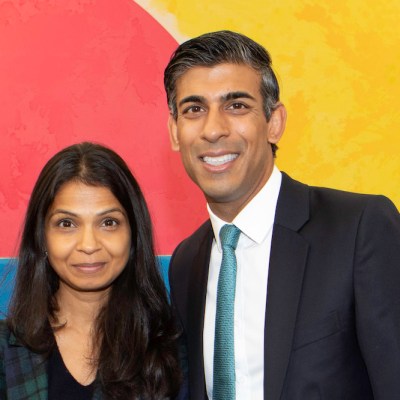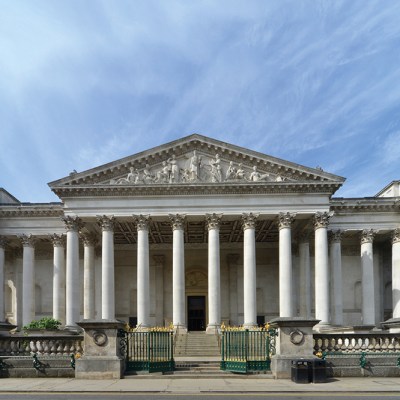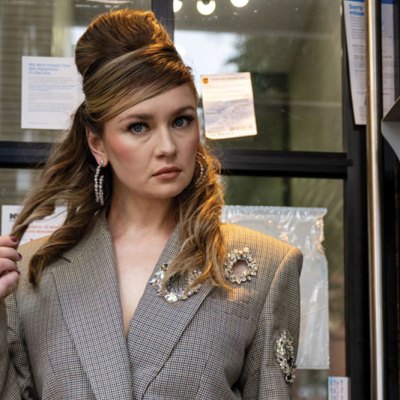From the April 2024 issue of Apollo. Preview and subscribe here.
The Venice Biennale is sometimes called the Olympics of the Art World, and while the analogy is creaky, it is unarguably the most important event in its field. Like the Olympics, it can make, and occasionally break, reputations. There is also an element of competition, especially among the national pavilions, whose artists compete for a coveted Golden Lion award. Finally, there is almost constant backbiting about the politics and finances of the whole thing.
This year’s edition opens to the public on 20 April. Much like its sporting counterpart, the Biennale has ballooned into a multimillion-euro event of vast proportions. The ‘official’ Biennale consists of a central exhibition spread across two enormous spaces and 90 national pavilions, while 30 further exhibitions – ‘collateral events’ – carry the Biennale imprimatur. The main exhibition, ‘Stranieri Ovunque – Foreigners Everywhere’, curated by Adriano Pedrosa, will show a record 332 artists and collectives (probably more than 400 people in total). That is roughly 50 per cent more than 2022’s list, which was already one of the largest ever.
Like most financial aspects of the art world, how this is all funded is shrouded in secrecy (the numerous state-funded organisations who contribute to its coffers are just as unwilling to talk about money as the commercial players). But it is well known that the ambitions of the artists, curators and organisers of the national pavilions now far outstrip the public funds available.
The Biennale ‘is very underfunded, all aspects of it. It can’t survive without large injections of additional cash from artists’ galleries and private foundations,’ a leading US-based curator, who wished to remain anonymous, told me in 2019. ‘The ethics of it all have changed completely in the past decade,’ she added. ‘It is not so long ago that funding by the primary gallery of a living artist would have been considered inappropriate.’
What we do know is that the official budget for this edition of the director’s show is £19m, a third more than the cost a decade ago but almost certainly not enough to cover its massive expenses (the nearest comparable exhibition, Documenta in Germany, had a budget in 2022 of €42m). The US Pavilion alone is set to cost $5m, the artist representing the United States, Jeffrey Gibson, told New York Times correspondent Zachary Small last year. Small also revealed that this was in fact cheaper than the US presentation of sculptor Simone Leigh in 2022, which cost an estimated $7m. This compared with about $72,000 for Robert Rauschenberg’s Golden Lion-winning exhibition in 1964 (around $720,000 today).
The British Council, organisers of the national pavilion, meanwhile, announced a solution to funding what is likely to be an expensive presentation (as usual, it declined to reveal any figures at all). Its large-scale, multiscreen film commission by John Akomfrah in one of the most prominent pavilions in the Giardini will be sponsored by Burberry, Christie’s, Akomfrah’s gallery Lisson, and Frieze, owner of the group of international art fairs.
It says something about the proximity between the not-for-profit art world, such as museums and biennials, and the commercial art world of galleries, auction houses and collectors, that a pavilion funded in part by an artist’s gallery, an auction house and an art fair was reported largely without comment.
There have always been tensions between the public sector, the art market, collectors and, in more recent decades, corporate sponsors. Many of the great museums of the world were founded on private wealth, but by the end of the Second World War the mood had altered radically, especially in Europe. Across the continent, new state museums, galleries and biennials were established. In Britain the Arts Council was set up in 1946, under the same Labour government that created the NHS and the welfare state, to fund the arts for the greater benefit of the people, not the privileged few. A combination of high taxes, a tiny art market and an increasingly powerful state saw all kinds of cultural assets pass from private to public hands.
The idea of an auction house sponsoring a public exhibition was once unthinkable. But if ‘Francis Bacon: Man and Beast’ at the Royal Academy in 2022 is anything to go by, it is now a common practice. Photo: Mike Kemp/In Pictures via Getty Images
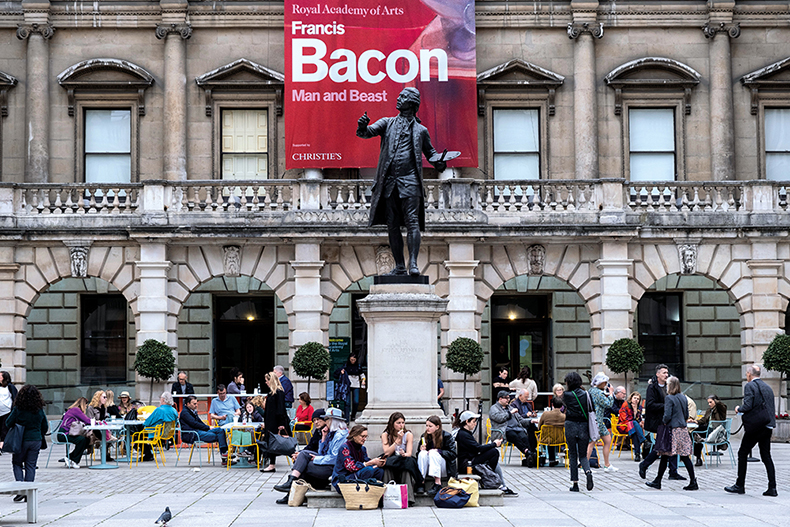
By the 1980s the vast majority of public art galleries and museums in Britain and mainland Europe were entirely state funded, bar a small amount of income from tickets and cafes. ‘That has obviously changed,’ says Maurice Davies, a cultural consultant and former head of collections at the Royal Academy of Art. ‘Since the Thatcher era the trend across all aspects of the public realm has been towards privatisation and that includes the arts.’ And where the UK led, other European countries have followed.
Davies’ first curatorial job was at the Manchester Art Gallery in the 1980s. ‘It was funded by a Labour council and had a very socialist director. The attitude was firmly that art was for the people and part of the public realm,’ he says. The perhaps rather patrician fear was that the public’s appreciation of art would be tarnished by too great a proximity to money.
As recently as the mid 2000s, the Museums Association (MA), which is the keeper of the official museum code of ethics, shared similar views. Senior staff at the Walker Art Gallery in Liverpool complained that Sotheby’s had been allowed to host a preview there. A heated internal debate ensued, but their objections were ultimately unsuccessful (possibly because the event was private, so the public could not have been ‘contaminated’). ‘I remember there was a lot of concern about museums and galleries participating in TV shows such as Antiques Roadshow, because they were only supposed to acknowledge an object’s cultural value, and not its likely financial worth,’ Davies says.
If this now seems a bit quaint, other objections seem more like snobbery. Charles Saumarez Smith, a former director of the National Gallery, recalls that in 1950 one of his predecessors, Philip Hendy, made no efforts to secure the promised gift of one of the most significant art collections in the world, which belonged to the Portuguese oil magnate Calouste Gulbenkian: ‘He disapproved of Gulbenkian because he was rich. Hendy felt it wasn’t his responsibility to cultivate private donors – but he went further and didn’t even bother to visit him in Lisbon.’
Then there were concerns that friendships or, worse, financial relationships, would affect what museums would collect or show. ‘When I was a young curator at the V&A, any fraternisation between us and the commercial art world was frowned on, because we might be corrupted,’ Saumarez Smith recalls. ‘In theory, you could not accept so much as lunch, because you might be subject to undue persuasion over the acquisition of an object.’
Installation view of ‘Thinking of You. I Mean Me. I Mean You’ (2024) by Barbara Kruger (b. 1945), who is represented by David Zwirner, at the Serpentine South Gallery, London. Photo: George Darrell; © Barbara Kruger
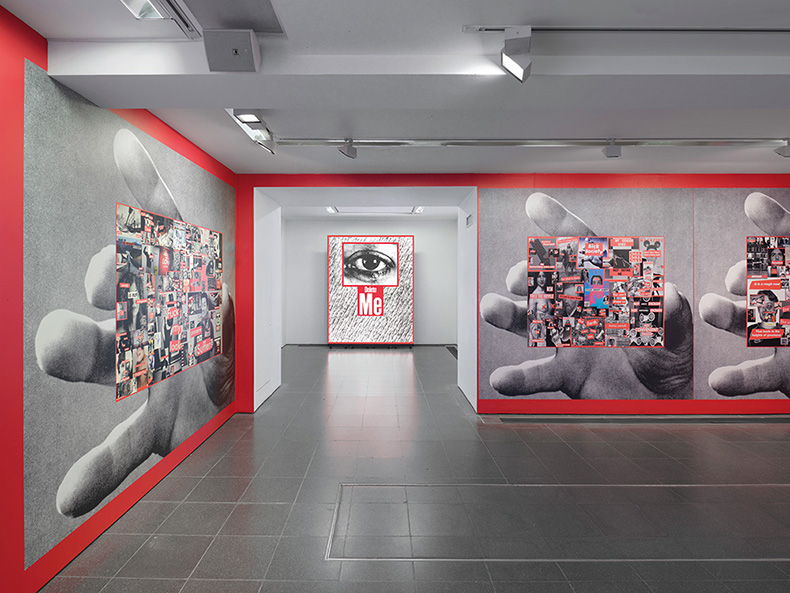
This anxiety has proved longer lasting, especially as the quiet funding of museums shows and biennales by the art market has become increasingly common. In 2015, when I was the editor of the Art Newspaper, it published a report that suggested there were close relationships between leading US museums and some commercial galleries. Almost a third of the major solo shows in US museums (nearly 600 exhibitions at 68 institutions) over a fiveyear period were of artists represented by just five galleries: Gagosian, Pace, Marian Goodman, David Zwirner and Hauser & Wirth. But how much of this was influence and how much shared taste proved impossible to untangle.
‘I believe that sources of funding can be a powerful force,’ says writer, curator and photographer Julian Stallabrass. ‘It’s not explicitly talked about, but private funding and gallery involvement inevitably influences at some level what does and doesn’t get shown.’ But, he adds, this is no longer a widespread concern, or not publicly at least. ‘It has been such a powerful long-term trend, with so little prospect for change, that it is usually greeted with a fatalistic shrug,’ he says.
This may in part be a result of recent failures in state funding. Governments have been squeezing cultural spending in wealthier nations since the financial crash of 2008 even as costs rise. In the UK, Arts Council budgets have reduced significantly in real terms since 2010, while the British Council has had its Foreign, Commonwealth and Development Office budget reduced sharply. Italy’s arts budgets have also been cut: private collectors and foundations have been stepping in to make up shortfalls in contemporary art museums’ grants.
Then there is a sense that support from the art market is benign compared with money from some other sources. Oil companies, opioid drug manufacturers and arms firms, once big supporters of the arts, are now largely out. It seems unlikely that the Venice Biennale would take funds now from Russian gas billionaire Leonid Mikhelson as it did in 2013 or, more recently, JTI (Japan Tobacco International).
Finally, it seems that more and more curators are comfortable taking money from the market. ‘It is a gallery’s job to advocate on behalf of their artists,’ says Henry Little, a former art adviser and the director of the new not-for-profit contemporary art museum Fortress House in Gibraltar. But museum and biennial directors don’t have to listen. ‘If a curator wants to show an artist whose works have a strong market, they are well aware that they will also benefit from [the gallery’s] investment in that artist in terms of reputation, pulling power, potential ticket sales,’ he says. In other words, it is a highly symbiotic relationship.
The 800,000 members of the public who bought €25 tickets to the 2022 Venice Biennale were almost certainly unaware of all of these largely hidden funding arrangements – and if they were, they may well not have cared. But there is always a danger that at some point a line is crossed that is hard to treat from. The Olympics long ago lost its amateur ideals, as will no doubt be evident at the Paris games this summer. But is this an example the Venice Biennale or indeed the rest of the art world wants to follow?
From the April 2024 issue of Apollo. Preview and subscribe here.

